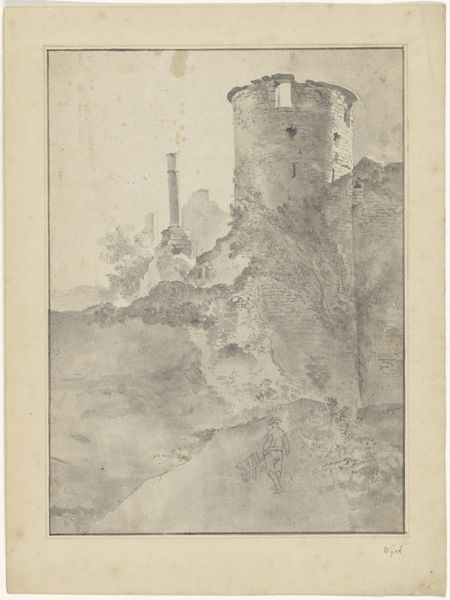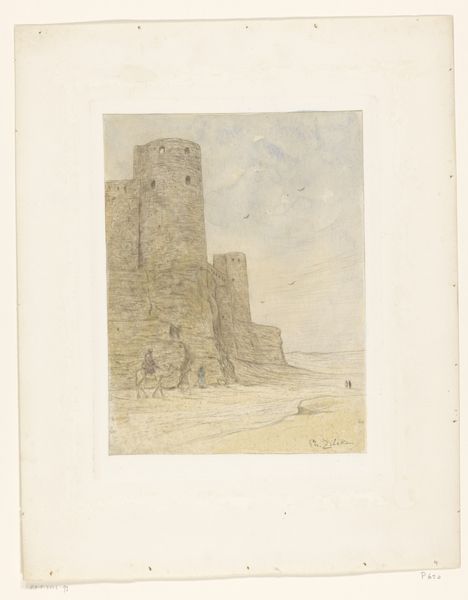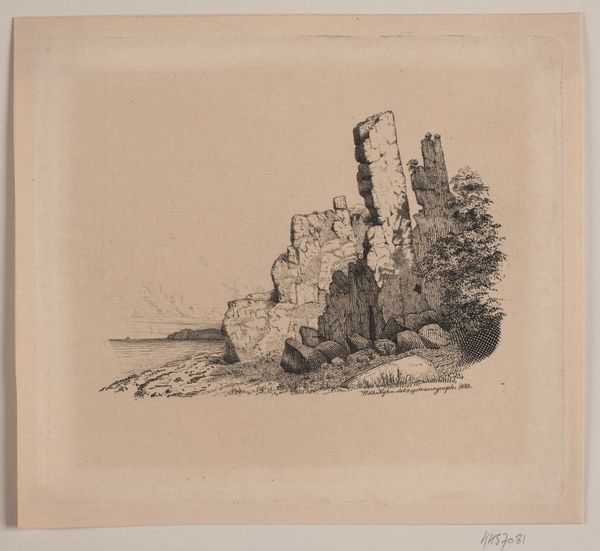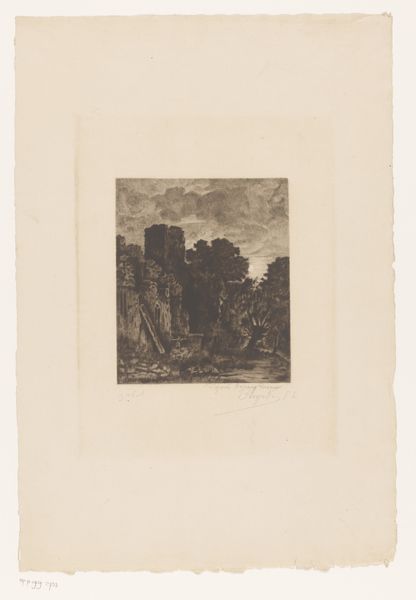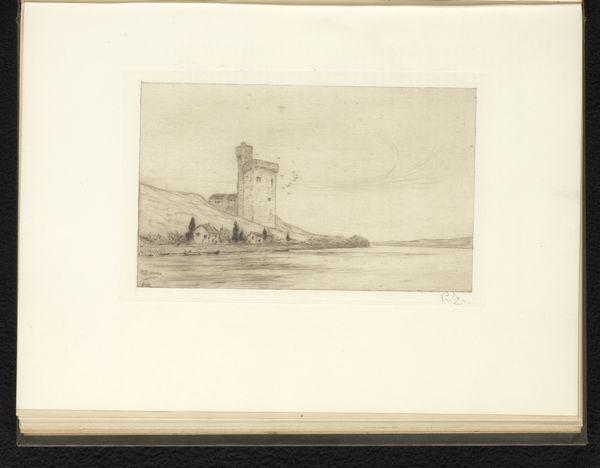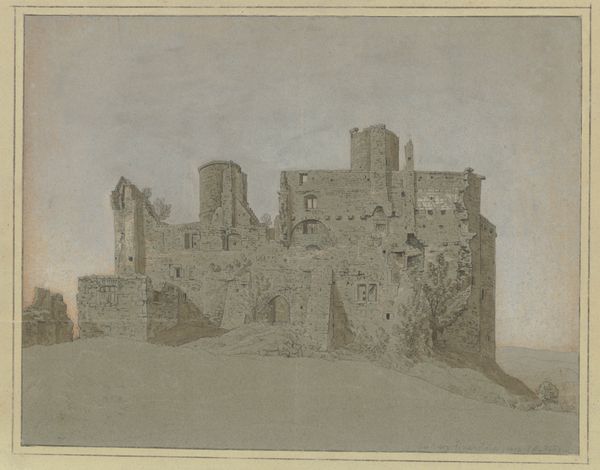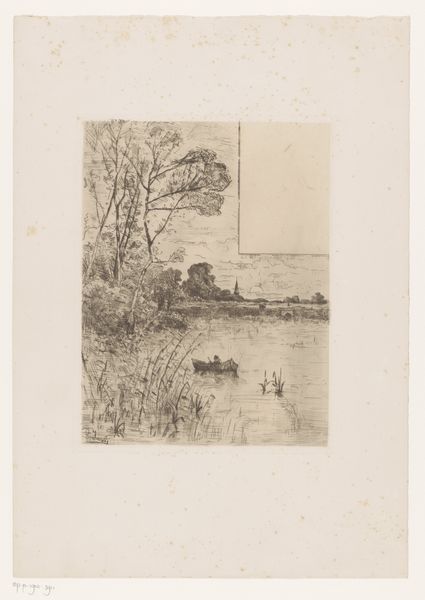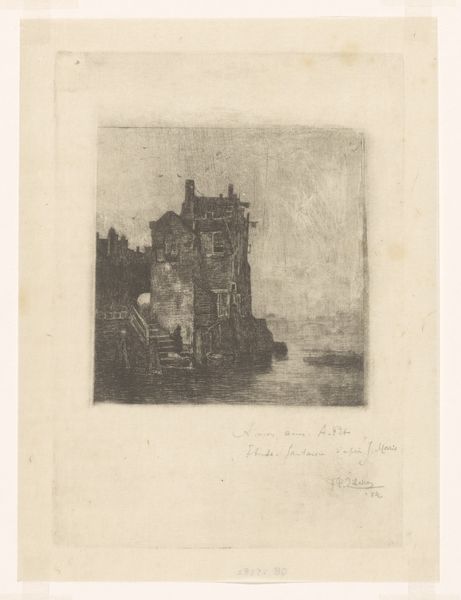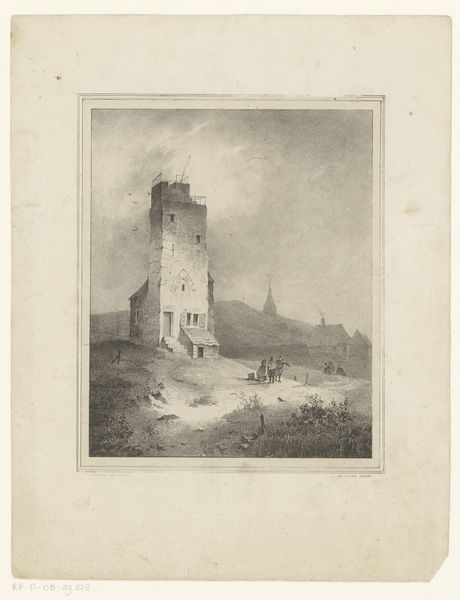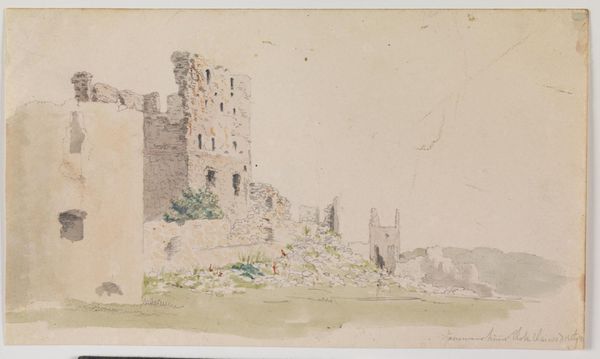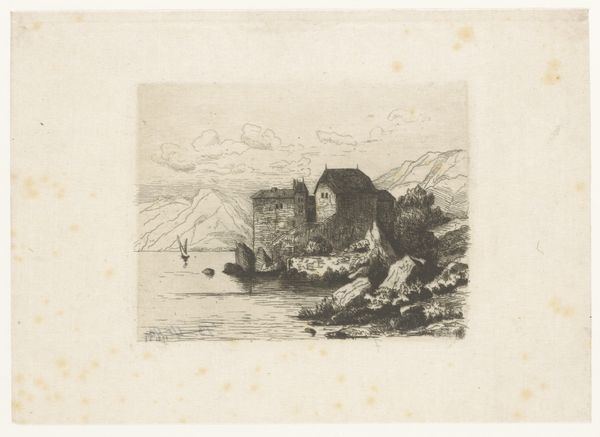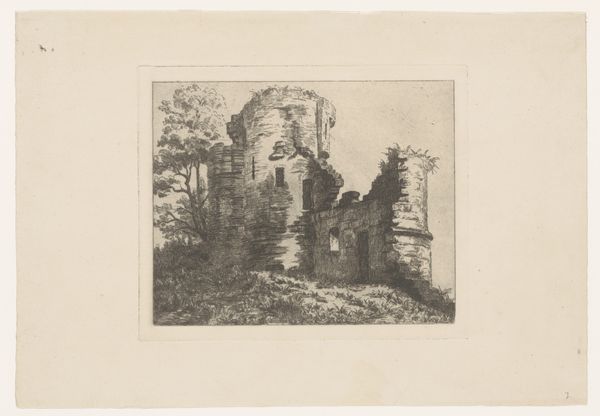
drawing, painting, print, plein-air, paper, watercolor
#
drawing
#
water colours
#
painting
# print
#
plein-air
#
landscape
#
paper
#
watercolor
#
romanticism
#
cityscape
#
watercolor
Dimensions: 273 × 231 mm
Copyright: Public Domain
Curator: "Conway Castle," a watercolor on paper completed around 1802 by Cornelius Varley, offers a glimpse into the artist's landscape sensibilities. Editor: Oh, it’s dreamy! Like a faded photograph clinging to a memory. It feels both serene and vaguely melancholic, don’t you think? The grayness is a bit heavy. Curator: Gray definitely dominates. It speaks of the sublime, doesn't it? The lone tower against the watery expanse. This subdued palette, almost monochromatic, draws heavily on the romantic era where ruins symbolize the passage of time, the transience of human endeavors against nature’s persistence. Notice how the architectural solidity contrasts the almost vaporous sky. Editor: The way he's handled the light, too—it feels diffuse, almost otherworldly. I get a strong feeling of quiet contemplation, standing there by the water’s edge. It makes you wonder what Varley was feeling as he sketched this. Maybe a bit lonely? Curator: Quite possibly. Conway Castle itself holds complex cultural significance, initially erected by Edward I during his conquest of Wales. It embodies power, subjugation, and ultimately, the shifting tides of history. Varley likely knew this, and I suspect this awareness informed his choice to portray it this way. He perhaps reflects on themes of British identity or on colonialism's imprint upon the land itself. Editor: See, that just adds another layer to the melancholy! All that history just weighing down on the stones. I initially just saw a pretty picture, but it’s definitely deeper than that. Funny how a simple landscape can do that, isn’t it? Whisper stories from the past. Curator: Indeed. A picture might be worth a thousand words, but here, the colors also carry their weight in historical and emotional texture. The symbol becomes a portal, where watercolor blurs the boundaries between what we observe, what we remember, and what a place continues to mean. Editor: So, the next time I feel blue, maybe I should seek out some picturesque ruins? It certainly provides some perspective, thinking about how everyone leaves ruins for the next culture and civilization. Thanks, Varley.
Comments
No comments
Be the first to comment and join the conversation on the ultimate creative platform.
